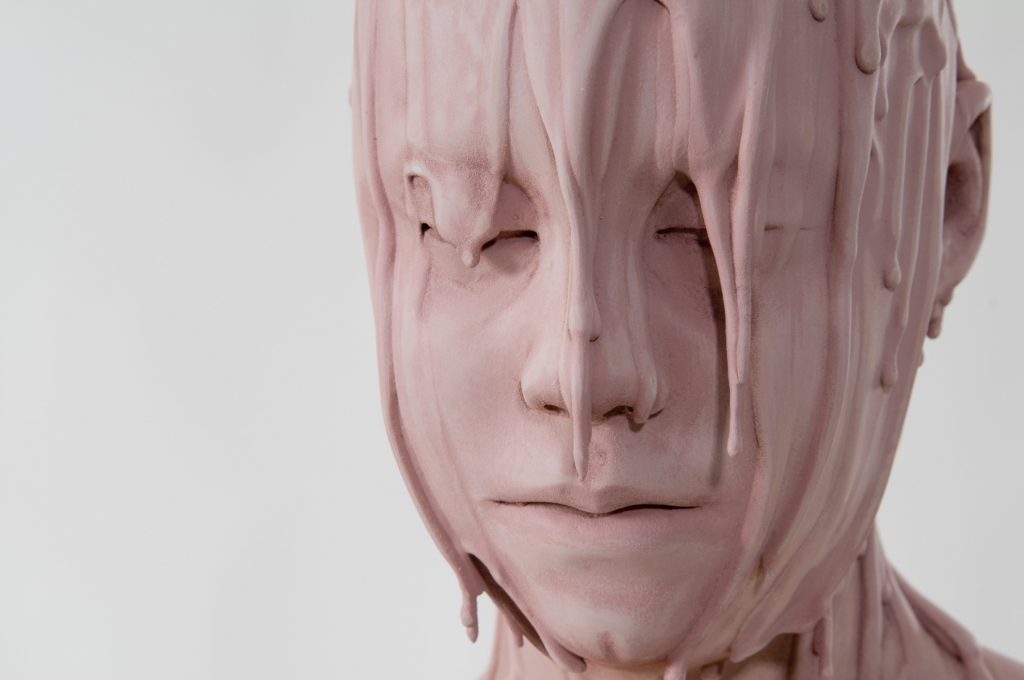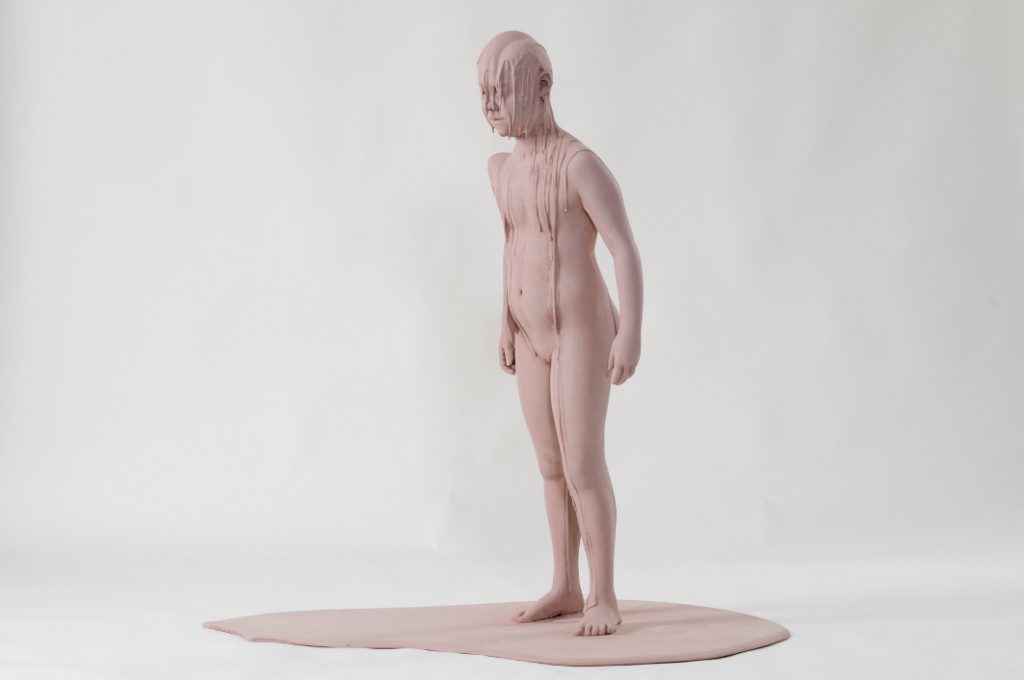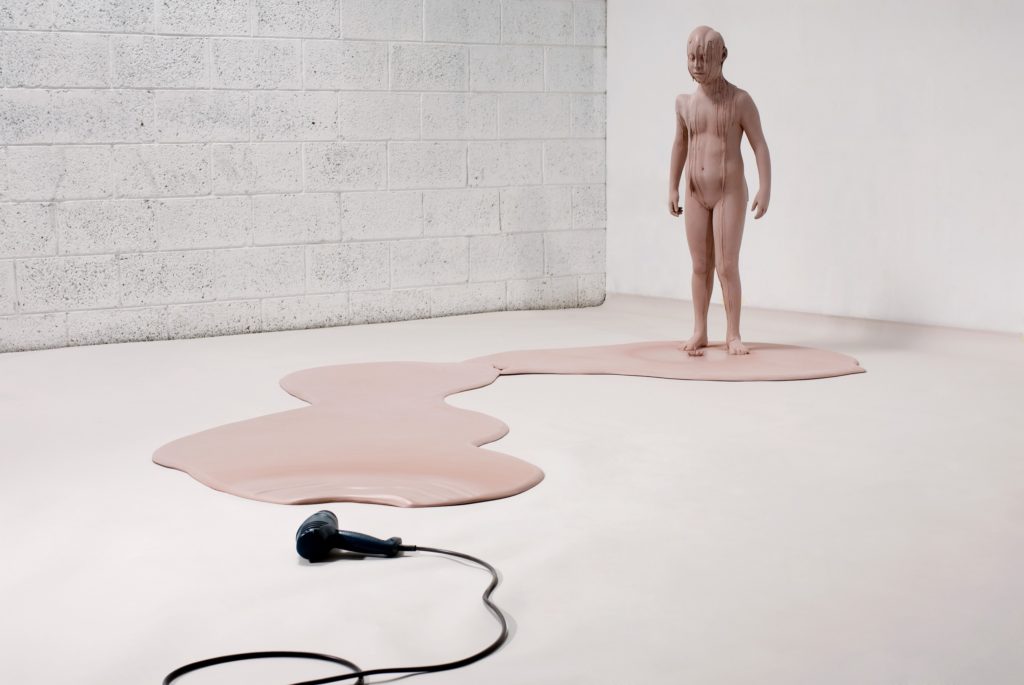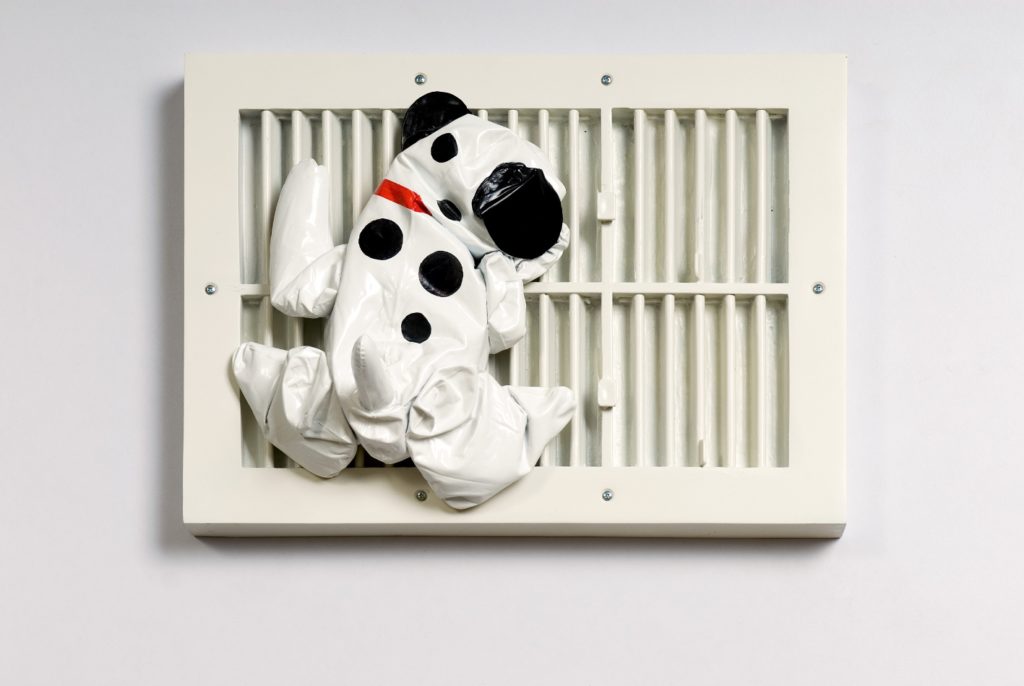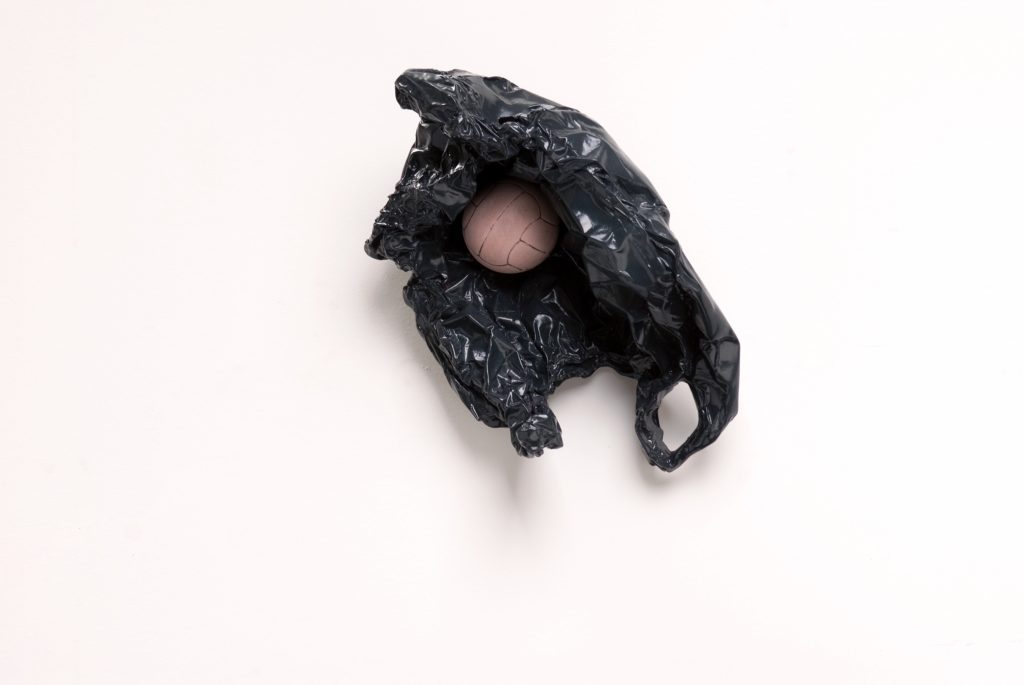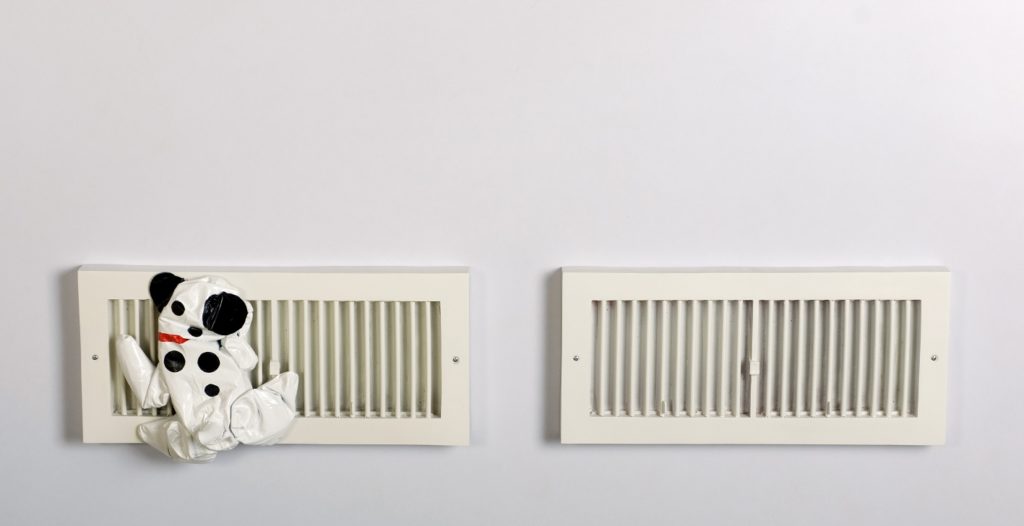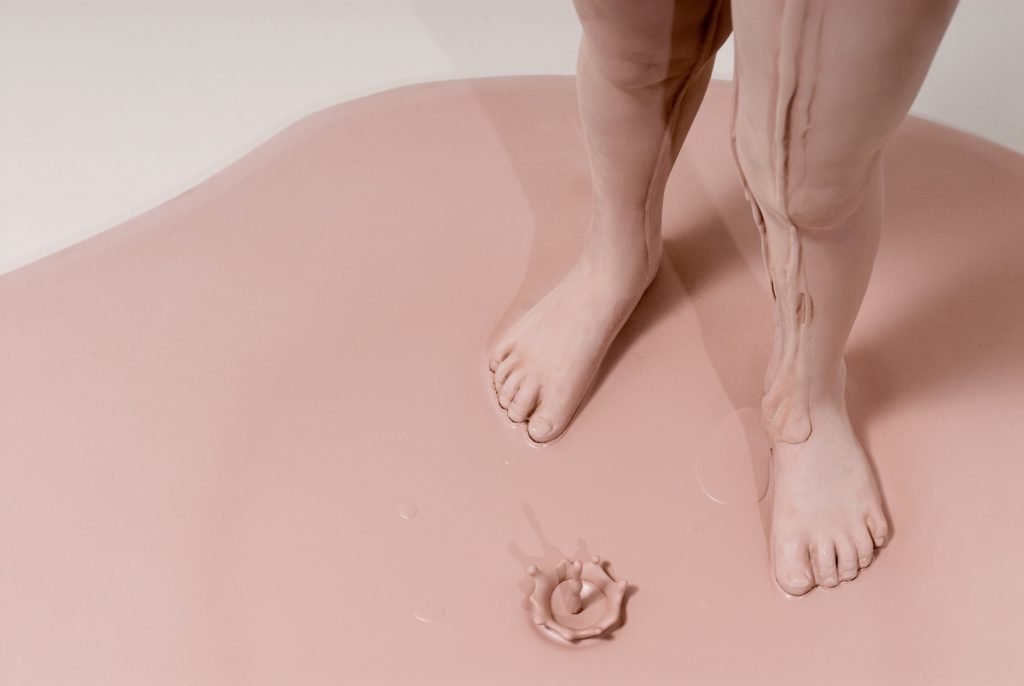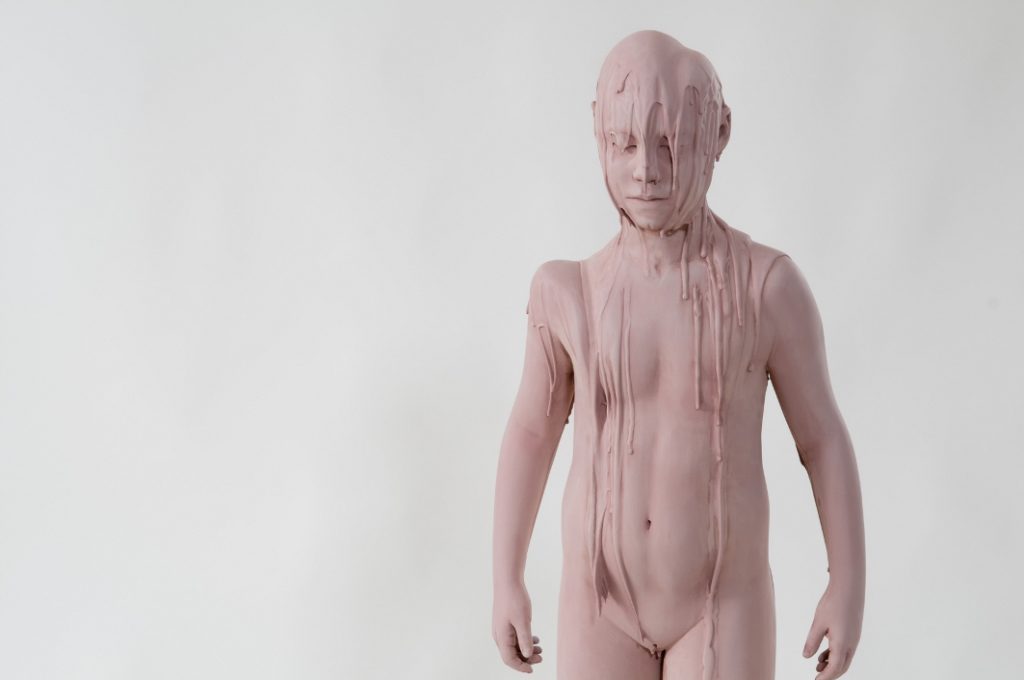Freestanding, Haifa Museum of Art, 2009
In recent years, Tal Frank has mostly presented bodies of work composed of hyperrealistic, polished sculptures. She specializes in casts made of polymeric materials, which she expertly transforms into simulacra of a wide range of materials: paper, cardboard, metal, plastic, various fluids, bones and fur. Frank’s works combine characteristics of classical, naturalistic sculpture, which glorifies the mimesis of an idealized reality; at the same time, she dialogues with postmodern art, applying her sculptural strategy to objects that are taken from the sphere of everyday life, and which often resemble ready-mades.
In contrast to most of her works, whose level of finish initially creates the illusion that the sculpted object is a perfect imitation of reality, the sculpture of the girl at the center of the installationFreestanding remains “unfinished.” The material’s pinkish color has not been camouflaged by an additional layer of paint that would have endowed it with the appearance of a perfect copy. This decision to leave the material unraveled and unfinished is unusual in the context of Frank’s highly polished works. In this manner, the artist chooses to announce that this is indeed a sculpture; by imperfectly representing reality, she seems to be delaying an impending disaster before it comes to pass.
Frank’s works always contain an element related to destruction, and clearly express her preoccupation with death. The connection between death and the perfect imitation of reality endows these works with a surreal quality that may appear either humoristic or morbid; it highlights the preoccupation with vestiges, with abjection and with dysfunctional states. The installation’s title, “Freestanding,” relates to a form of sculpture that constitutes an independent entity as well as alludes to the source of the state of fear it captures. The fear of death, a recurrent motif in Frank’s work, is fused in this installation with parental anxieties. “Freestanding” may be interpreted as a metaphor for a mother’s fears concerning her daughter, who served as a model for the sculpture. In this nightmarish scene the little girl undergoes a trauma of some sort, and the liquid running down her body points to a hidden and violent transformative force. The decision to leave the sculpture “unfinished” is thus indicative, it seems, of the incompatibility between two types of creation – parenthood and art making. The sculpture’s imperfection symbolizes the desire to circumscribe anxiety within the limits of artistic representation, moments before it seeps into the real.
